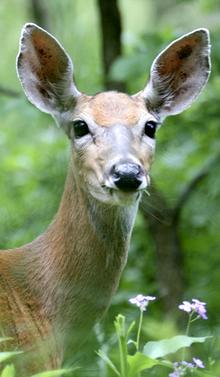I've designed and installed plantings all over Westchester County: the shores of the Long Island Sound, the hillsides along the Hudson, homes next to golf courses, lakes and wooded areas, and rural areas in the northern part of the county. Many of these plantings were done without benefit of deer fencing in deer-infested areas. There are a handful of trees and shrubs that are my go-to plants in these situations. These are the ones you should try if you have deer wandering through your property unchecked and have had problems with deer browse damage on your existing plants. The caveat is, of course, that if the deer get hungry enough they may eat plants that they've never eaten before. So no guarantees! But try them anyway!
Evergreens that are deer-resistant are the most important category, since they are integral to the "bone structure" of your garden, and are important for privacy screening as well. The most reliably deer-resistant evergreen is boxwood. Deer really leave it alone!
Other broadleaf evergreens that I often use are skimmia (Skimmia japonica), andromeda (Pieris japonica) and sweetbox (Sarcococca hookeriana). If I want to add some flower power and have the right conditions, I plant hybrid mountain laurel (Kalmia hybrids). New Kalmia cultivars are entering the Nursery trade every year, with more spectacular bloom colors and compact, neater silhouettes.
Another excellent choice is American holly (Ilex opaca). It takes shade, and is actually found in the forest, but it doesn't mind some sun either. It is a tree, though, so give it enough space.
The needle evergreens (conifers) that I turn to are Norway spruce (Picea abies), Oriental spruce cultivars (Picea orientalis), Colorado Blue spruce and its cultivars (Picea pungens), limber pine (Pinus flexilis) and concolor fir (Abies concolor 'Candicans').
